Introduction
In the realm of architectural outsourcing, the pursuit of excellence hinges on a meticulous selection process that prioritizes key competencies and strategic advantages. As firms navigate an increasingly competitive landscape, the importance of identifying architects with proficiency in design software, a robust understanding of building codes, and exceptional communication skills cannot be overstated.
Moreover, outsourcing offers the potential for significant cost savings and access to a global talent pool, fostering innovation and flexibility in project execution. However, the journey is not without its challenges; misconceptions surrounding quality control and cultural differences can impede success.
By adopting a structured approach to outsourcing and emphasizing effective communication, architects can harness the full potential of these services, ultimately driving superior project outcomes and enhancing their design capabilities.
Key Skills to Look for in an Outsourced Architect
When engaging in outsource architecture, it is imperative to seek architects who demonstrate the following critical competencies:
- Proficiency in Design Software: It is essential that the architect is adept in industry-standard software such as AutoCAD, Revit, and SketchUp. Mastery of these tools is essential for creating precise and detailed designs that fulfill specifications.
The utilization of advanced 3D modeling software allows for tailored concept renderings that capture the essence of your design vision, ensuring accuracy through meticulous detail. For example, using SketchUp, architects can create detailed models that allow for real-time adjustments, enhancing both clarity and accuracy in the design process.
Understanding of Building Codes and Regulations: A comprehensive knowledge of local building codes and regulations is necessary to ensure compliance, thereby mitigating the risk of legal complications during the lifecycle.
Strong Communication Skills: Effective communication is vital for fostering collaboration. Architects must be able to articulate their concepts clearly while also being receptive to feedback, facilitating a productive working relationship. The clarity of 3D visualizations enhances client understanding and improves stakeholder communication, allowing for timely identification of potential design issues.
By involving clients in the visualization process, architects can ensure that stakeholder expectations are aligned with the design intent.
Attention to Detail: A meticulous approach is crucial, as minor oversights can escalate into significant challenges during the construction phase. An architect’s ability to focus on the finer points not only influences the outcome but also reflects a commitment to visually stunning and technically accurate architectural renderings.
Task Management Experience: Familiarity with timelines, budget constraints, and resource allocation is vital. An architect with management abilities can aid in the seamless execution of the assignment, ensuring that deliverables are met on schedule and within budget.
In a competitive environment where there were 35,621 candidates actively pursuing licensure in 2022, prioritizing these skills becomes even more essential. Additionally, with the architecture industry experiencing steady growth, as evidenced by a 1.6% CAGR from 2019 to 2024, the demand for skilled architects is on the rise. In the U.S., there are currently 73,313 architecture businesses, highlighting the necessity for architects to distinguish themselves through the competencies discussed.
By concentrating on these essential skills, you can identify an architect to outsource architecture, whose expertise aligns with your vision and requirements, ultimately driving successful design outcomes.
Strategic Advantages of Outsourcing Architectural Services
Outsourcing design services presents several strategic advantages that can significantly enhance operational efficiency and project outcomes:
- Cost Savings: Utilizing global companies for design services can dramatically reduce labor expenses. In fact, companies that participate in external resource management can realize savings of approximately 27.2% on their operational expenses, particularly in areas like HR, as noted by NAPEO. This principle extends to design services, where competitive rates do not compromise quality. Furthermore, the consulting services externalization market is valued at $62 billion, highlighting the significant financial impact that companies can experience when they choose to outsource architecture and other external services across various sectors.
- Access to Global Talent: Outsourcing allows firms to outsource architecture, enabling them to access a diverse array of skilled architects from various regions, fostering creativity and innovation. Recent reports indicate that firms are increasingly looking to outsource architecture in the design market to capitalize on global talent, infusing unique perspectives and expertise into their projects.
- Increased Flexibility: Outsourcing offers the ability to modify your workforce based on task demands. This approach allows firms to scale operations efficiently, accommodating fluctuating workloads without the overhead associated with hiring permanent staff.
- Faster Project Turnaround: With a dedicated outsourced team, design tasks can be executed concurrently across multiple time zones, leading to expedited project timelines. This efficiency is further enhanced by technological advancements, as many firms are projected to integrate AI and automation into their business strategies by 2025, according to insights from industry analyses. The case study named ‘Future of Outsourcing’ demonstrates how technological progress and evolving business practices are impacting the design service landscape.
- Focus on Core Competencies: By choosing to outsource architecture tasks, architects can concentrate on their primary business activities. This division of labor not only streamlines processes but also enhances overall productivity, enabling firms to deliver more comprehensive and innovative design solutions.
Additionally, investing in high-quality 3D visual representations is vital for architectural success. These illustrations serve as a window into the future of your initiative, enabling stakeholders to envision the possibilities and promoting informed decision-making. Beyond simple aesthetics, the strategic investment in high-quality exterior three-dimensional visuals can attract investors and simplify the approval process, boosting appeal and ensuring it is comprehended and valued in its entirety.
In a complex structural environment, where scale and intricacy significantly affect visualization time and resource needs, prioritizing quality representations becomes crucial for effective development. The intricacy of an undertaking can significantly affect the resources required for producing, making it essential to take these elements into account when strategizing and investing in visualizations.
Overcoming Challenges and Misconceptions in Architectural Outsourcing
Outsourcing architectural services can open up new avenues for efficiency and innovation, but it also presents a series of challenges and misconceptions that professionals must navigate:
Quality Control: The apprehension surrounding the quality of outsourced work is prevalent. To mitigate this concern, it is essential to establish stringent quality standards from the outset and conduct regular audits of the output. High-quality renderings are not merely aesthetic; they serve as a window into the future of your endeavors, providing clarity that is crucial for informed decision-making. As noted by Elena Pashkovskaya, “Then, at the CD phase, the system deploys all code changes to a testing or production environment.” This proactive approach ensures that the deliverables meet the expected benchmarks of excellence.
Cultural Differences: Miscommunications often stem from cultural variances. Investing time to comprehend the cultural dynamics of your outsourced team is vital for enhancing collaboration. Understanding different communication styles can significantly reduce misunderstandings and foster a more cohesive working relationship, ultimately impacting the efficiency of your architectural vision.
Time Zone Challenges: Collaborating with teams across various time zones can complicate timelines. To address this, implement clear schedules and regular touchpoints that accommodate all parties involved. This practice not only enhances productivity but also reinforces a sense of unity among dispersed teams, contributing to a more effective design process.
Intellectual Property Concerns: Safeguarding your intellectual property is critical in the outsourcing landscape. Ensure that all contracts include strong confidentiality clauses, and consider using non-disclosure agreements (NDAs) to safeguard proprietary designs and information, thereby preserving the integrity of your endeavors.
Integration with In-House Teams: The synchronization of outsourced and in-house teams can be problematic without clear protocols. Establishing defined communication channels and utilizing collaborative tools can facilitate seamless integration, ensuring that all team members are aligned on goals.
Tips for Hiring Visualization Services: When seeking 3D architectural visualization services, consider evaluating provider portfolios to assess their style and quality. Seek client testimonials and references to gauge reliability and past performance. Additionally, ensure that the provider has experience pertinent to your specific type.
Cost Considerations: Be mindful of the cost implications when contracting external services. Understand the value proposition of high-quality renderings, as they can significantly impact project outcomes and client satisfaction. Balancing quality with budget constraints is essential for successful external sourcing.
As 96% of enterprises plan to accelerate transformation initiatives over the next two years, focusing on areas like cybersecurity and automation, recognizing and addressing these challenges can strategically position architects to successfully outsource architecture endeavors. By doing so, they can ultimately lead to more efficient design solutions and enhanced results, underscoring the essential role of high-quality visual renderings in development.
A Step-by-Step Process for Outsourcing Architecture
To effectively outsource architecture, it is essential to implement a structured step-by-step process.
- Define Scope:
Begin by meticulously outlining requirements, objectives, and deliverables. A well-defined scope ensures that all stakeholders share a unified understanding of the initiative, which is crucial for success.
Statistics indicate that endeavors with clearly defined scopes have a significantly higher completion rate.
- Provide Clear Information:
Timely and accurate information, such as design concepts, sketches, CAD files, and specific preferences, is vital. This clarity not only saves time and money but also ensures that the rendering process aligns with your architectural vision.
Specific details like dimensions, materials, and color schemes can significantly enhance the outcome. We’ve worked from comprehensive construction sets and even simple sketches, so providing detailed specifications is crucial.
- Research Potential Partners:
Identify and critically evaluate potential outsourcing firms or freelance architects.
Evaluate their portfolios, client references, and areas of expertise to ensure alignment with your requirements. Effective research can lead to partnerships that enhance service quality and leverage global talent, ultimately contributing to business agility.
- Conduct Interviews:
Engage in detailed discussions with shortlisted candidates to evaluate their skills and experience.
This interaction is essential for evaluating not only technical proficiency but also alignment with your objectives, fostering a collaborative environment from the outset.
- Negotiate Terms:
Clearly negotiate timelines, costs, and payment structures. It is imperative to document all agreements formally to mitigate misunderstandings later.
Significantly, delegating work can lead to considerable savings; according to NAPEO, businesses can save up to 27.2% by contracting services, emphasizing the financial advantages of this method in design projects.
Establish Communication Protocols:
Implement regular check-ins and a defined reporting structure to maintain oversight and facilitate collaboration. Effective communication is a cornerstone of successful outsourcing, allowing for timely adjustments based on workload and deadlines, a factor cited by approximately 70% of companies as a reason for outsourcing.Monitor Progress:
Regularly review the output against the defined standards and timelines. This is particularly important for adhering to international standards, which helps mitigate legal and compliance risks related to design. For instance, compliance with standards like the International Building Code protects project stakeholders from penalties and delays.Partner with J. Scott Smith Visual Designs:
Ready to explore the potential of your architectural design concepts? Partner with us to visualize and validate your ideas with our preliminary renderings. Our services provide the clarity you need to move forward confidently.
With a proven track record of successful endeavors, we ensure that your vision is realized with precision and creativity.
- Evaluate Outcomes:
Upon completion, conduct a thorough assessment of the quality of work and overall experience. This assessment is essential for guiding future outsourcing choices and improving your method of partnerships.
By following this organized process, architects can enhance their ability to outsource architecture initiatives, maximize efficiency, and ultimately attain better results.
Ensuring Effective Communication and Collaboration in Outsourced Projects
To achieve effective communication and collaboration in outsourced architectural endeavors, particularly through visual renderings, the following best practices should be adopted:
Utilize Collaborative Tools: Implement advanced management software and communication platforms—such as Slack, Trello, or Asana—to enable real-time collaboration and seamless updates among team members. These tools have been shown to significantly enhance coordination and efficiency.
Establish Clear Expectations: Clear definition of roles, responsibilities, and deadlines for all team members is crucial. This clarity reduces misunderstandings and ensures alignment with objectives, ultimately leading to more efficient workflows. Learning from past experiences through post-project reviews can help avoid repeating mistakes, further improving future initiatives.
Promote Constructive Feedback: Foster a culture where team members feel empowered to provide feedback and suggestions. Encouraging open dialogue can lead to innovative solutions and enhanced outcomes, as collective insights contribute to a more comprehensive understanding of challenges.
Conduct Regular Check-Ins: Schedule consistent meetings to assess progress, address concerns, and make necessary adjustments. These regular check-ins not only keep projects on track but also reinforce team cohesion and collective accountability.
Embrace Cultural Sensitivity: Recognize and respect cultural differences in communication styles. Tailoring your approach to accommodate these differences is essential for fostering effective interactions and collaborative relationships across diverse teams.
Incorporate Visual Renderings: Leverage the power of 3D visualizations to enhance contractor communication. By offering detailed visualizations, you eliminate design misunderstandings and enhance stakeholder engagement. This approach gives your contractors a break by providing them with a clear visual reference, ensuring that client specifications are met effectively. Early identification of design issues through visual tools ensures that client specifications are met effectively.
Detail Levels in Visualization: The collaborative visualization process at J. Scott Smith Visual Designs exemplifies meticulous attention to detail. We start with initial communication and briefs, followed by comprehending your vision in detail. Our skilled artists then create detailed 3D models, carefully selecting materials and lighting to reflect your design intent. Regular progress renderings allow for early feedback and adjustments, ensuring that the final product exceeds expectations.
By implementing these strategies, architects can significantly enhance collaboration and communication, which are vital for ensuring success when they outsource architecture projects. As the Bureau of Labor Statistics indicates, the growth of the domestic external service industry has resulted in a net creation of 4.5 million new jobs in the U.S. from 2010 to 2020. This growth underscores the importance of optimizing communication practices, especially since outsourcing customer service roles has been shown to result in a 10% increase in customer satisfaction. These statistics emphasize the essential role that effective communication has in attaining successful results in outsource architecture endeavors. Client testimonials, such as those from Kirk Bianchi of Bianchi Design, emphasize how compelling visuals can make a significant difference in project success, stating, ‘Scott’s attention to detail will make your project shine!
Conclusion
Outsourcing architectural services presents a compelling opportunity for firms to enhance efficiency, reduce costs, and access a diverse talent pool. As outlined, the key competencies to seek in outsourced architects include:
- Proficiency in design software
- A solid grasp of building codes
- Strong communication skills
- Attention to detail
- Project management experience
These skills are essential not only for ensuring compliance and quality but also for fostering collaboration that drives successful project outcomes.
The strategic advantages of outsourcing, such as significant cost savings and increased flexibility, further underscore its value in today’s competitive architectural landscape. However, navigating the inherent challenges—such as misconceptions regarding quality control and cultural differences—requires a structured approach.
Establishing clear communication protocols and integrating advanced collaborative tools can mitigate these challenges, ensuring that projects remain on track and aligned with client expectations.
By adopting a systematic process for outsourcing, architects can:
- Define project scopes
- Research potential partners
- Monitor progress effectively
This structured methodology enhances the likelihood of achieving superior outcomes while allowing firms to focus on their core competencies. Ultimately, the successful integration of outsourced services not only enhances the quality of architectural design but also positions firms to thrive in an ever-evolving industry. Engaging in outsourcing thoughtfully and strategically will lead to innovative solutions and a competitive edge, reinforcing the essential role of quality visual renderings in realizing project visions.

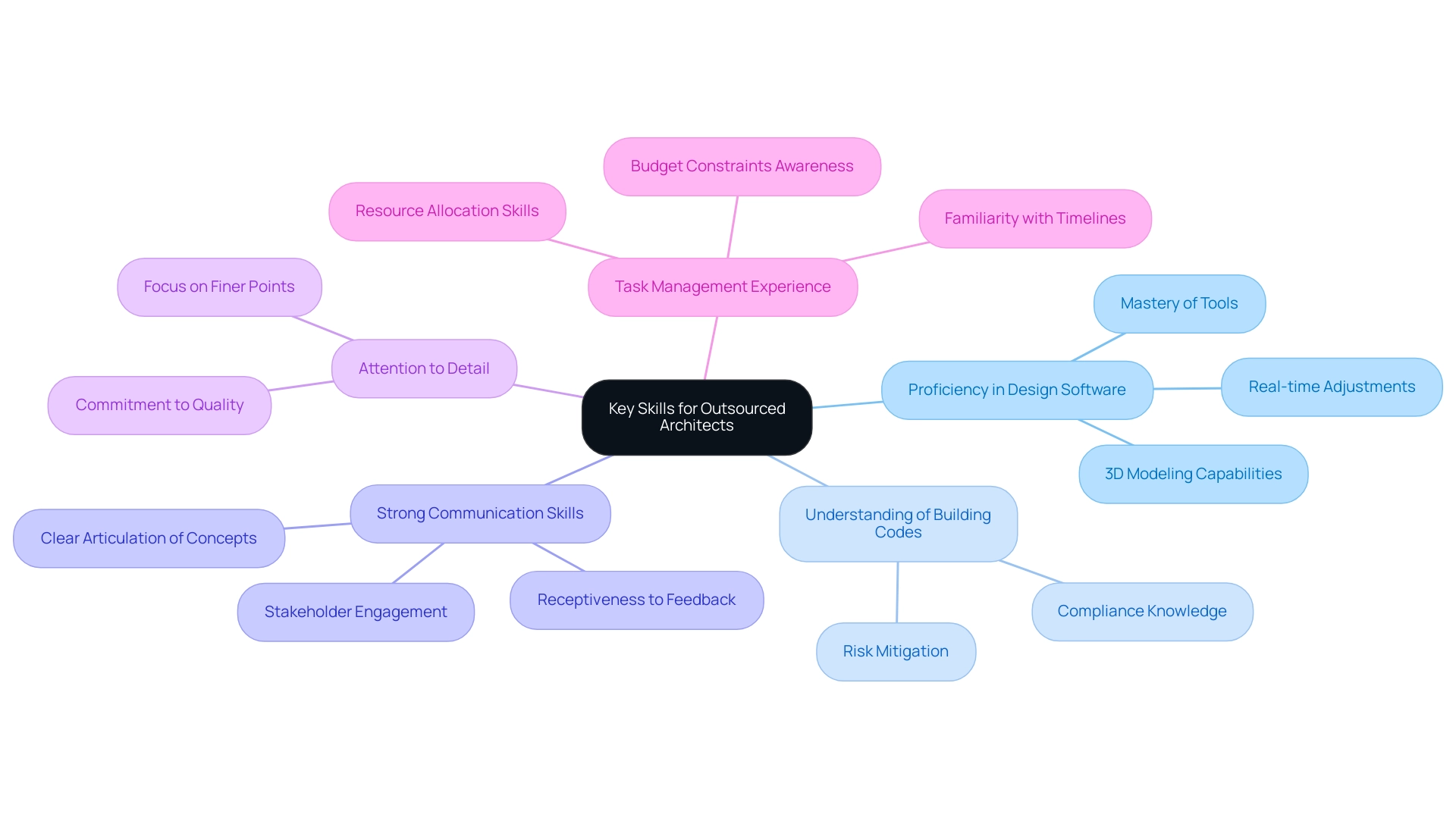
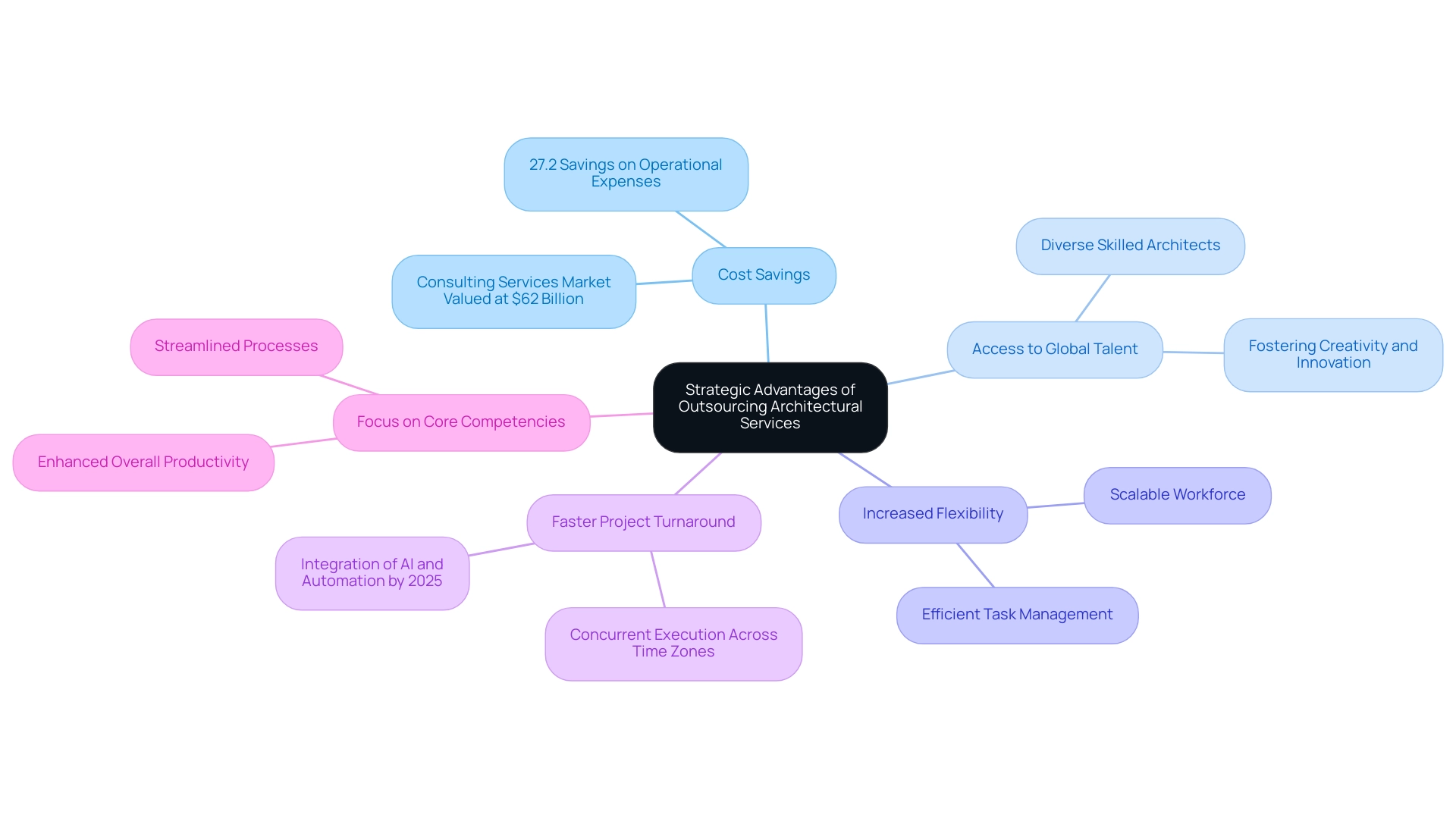
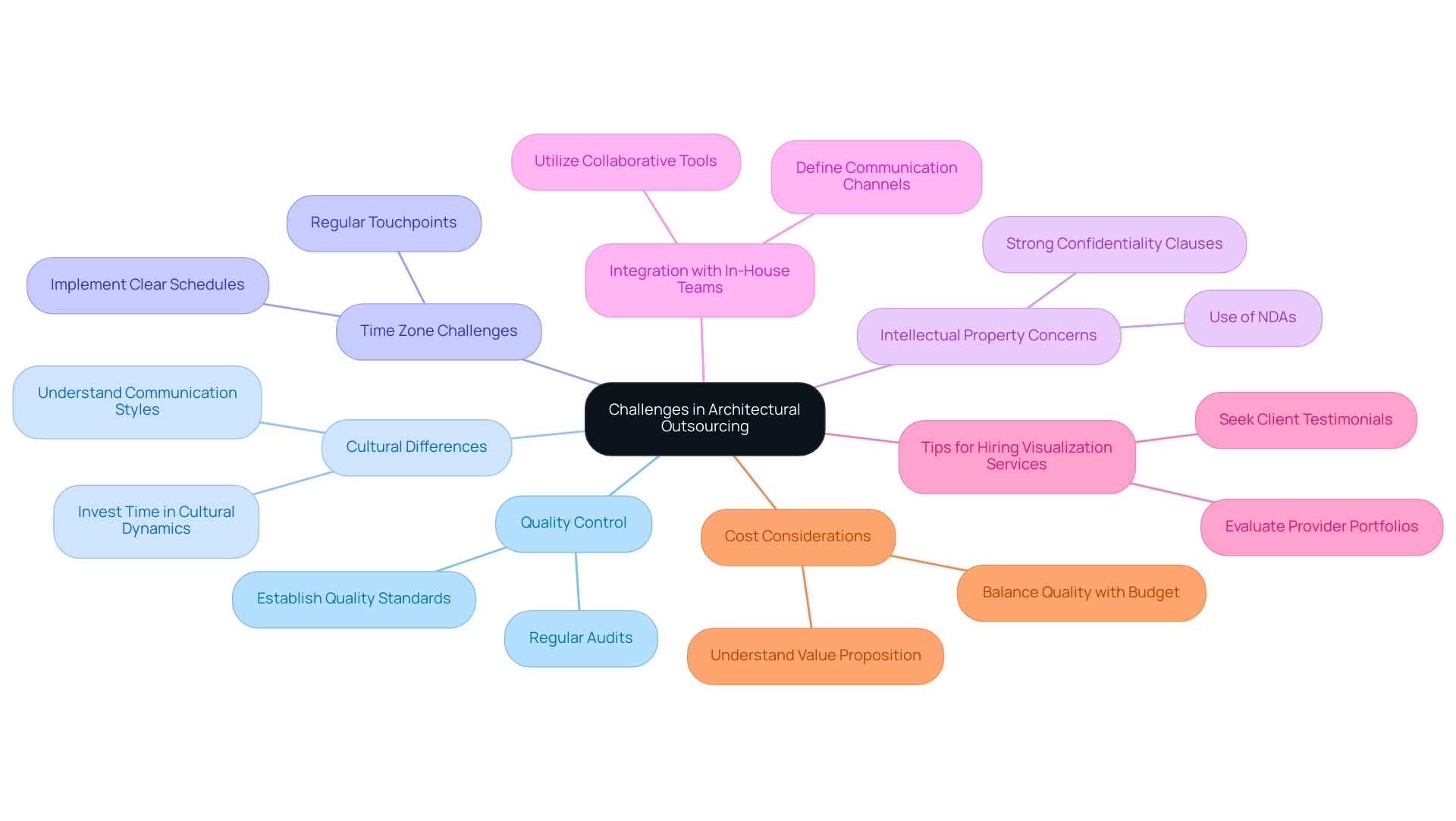
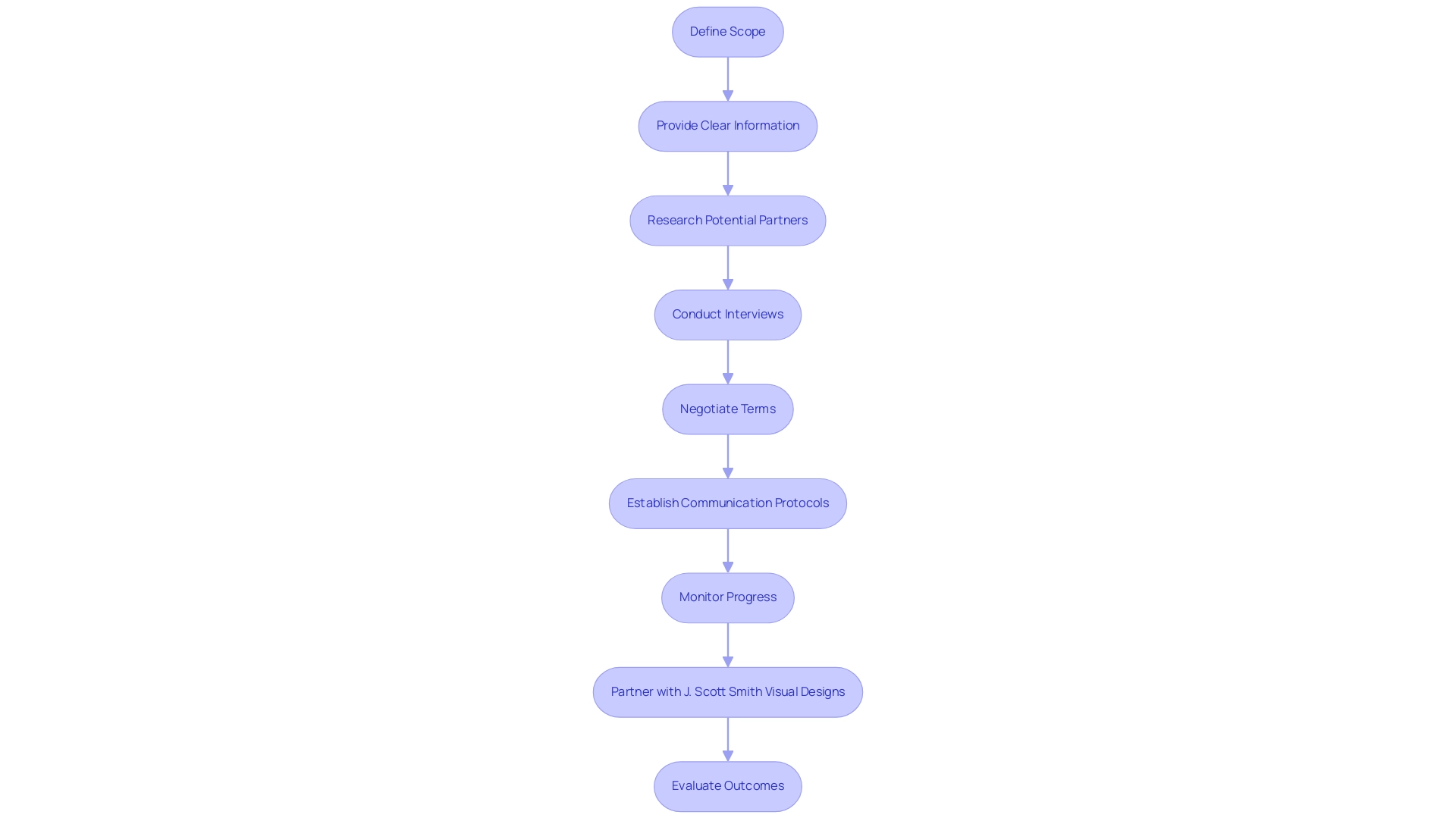
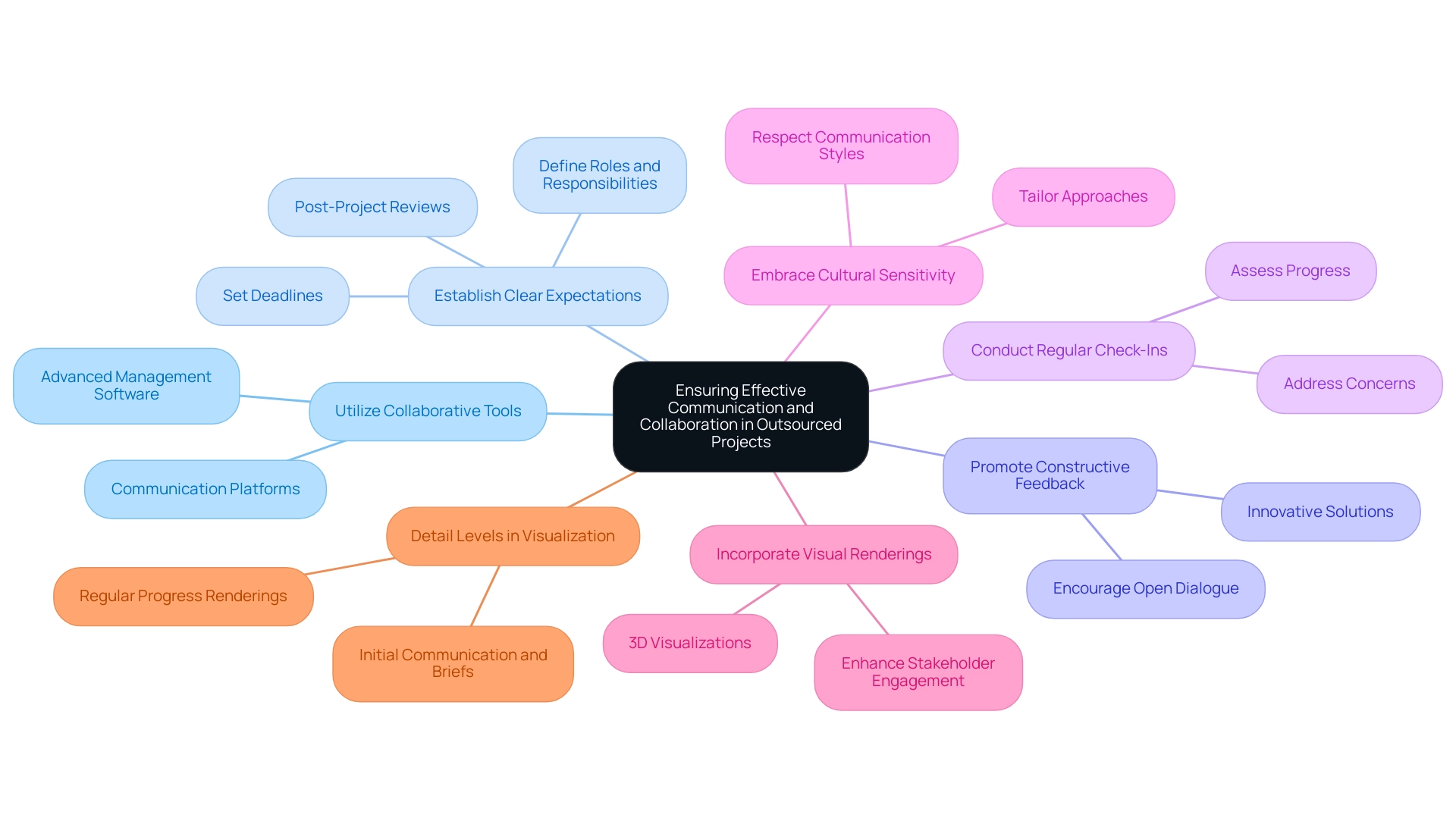
0 Comments